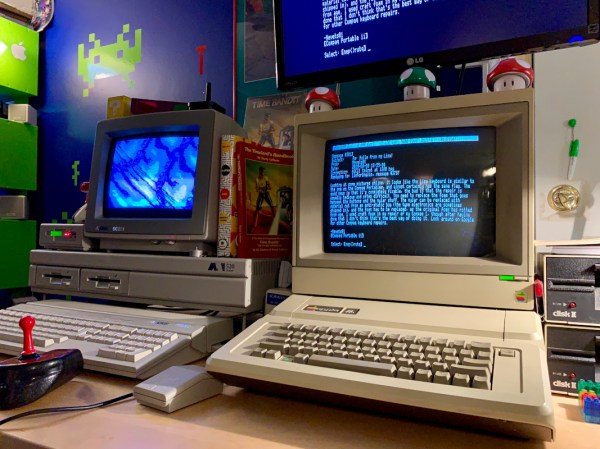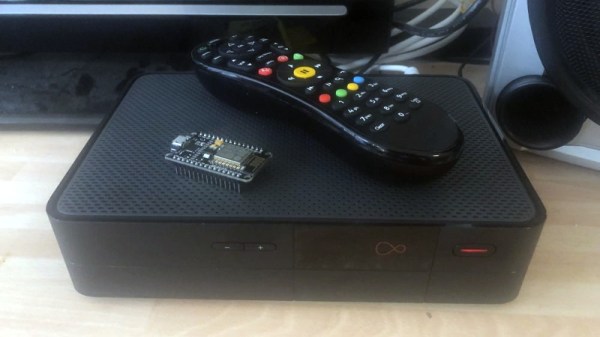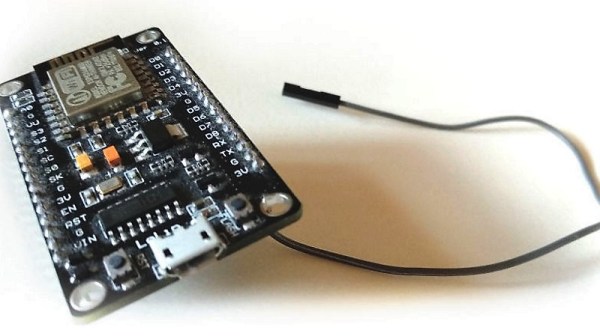Hold onto your hats, everyone — there’s stunning news afoot. It’s hard to believe, but it looks like over-reliance on chatbots to do your homework can turn your brain into pudding. At least that seems to be the conclusion of a preprint paper out of the MIT Media Lab, which looked at 54 adults between the ages of 18 and 39, who were tasked with writing a series of essays. They divided participants into three groups — one that used ChatGPT to help write the essays, one that was limited to using only Google search, and one that had to do everything the old-fashioned way. They recorded the brain activity of writers using EEG, in order to get an idea of brain engagement with the task. The brain-only group had the greatest engagement, which stayed consistently high throughout the series, while the ChatGPT group had the least. More alarmingly, the engagement for the chatbot group went down even further with each essay written. The ChatGPT group produced essays that were very similar between writers and were judged “soulless” by two English teachers. Go figure.
telnet10 Articles
A Handy Guide To The Humble BBS
Some of us who’ve been online since the early days fondly remember the web of yore — with its flashing banners, wildly distracting backgrounds, and automatic side-scrolling text. But there was a time before the worldwide web and the Internet as we recognize it today, and the way of communicating in this before-time was through Bulletin Board Systems, or BBS. There are still some who can cite this deep magic today, and this page is perhaps the definitive guide to this style of retrocomputing.
This how-to is managed by [Blake.Patterson] who is using a wide variety of antique machines and some modern hardware in order to access the BBSes still in service. He notes in this guide that it’s possible to use telnet and a modern computer to access them, but using something like an Amiga or Atari will give you the full experience. There are some tools that convert the telephone modem signals from that original hardware to something that modern networking equipment can understand, and while the experience might be slightly faster as a result, it does seem to preserve the nostalgia factor quite well.
For those looking for more specific guides, we’ve featured [Blake]’s work a few times in the past, once with an antique Epson PX-8 laptop and again with a modern ESP8266. It doesn’t take much computing power to get connected to these old services, so grab whatever you can and start BBSing!
Telnet Gets Stubborn Sony Camera Under Control
According to [Venn Stone], technical producer over at LinuxGameCast, the Sony a5000 is still a solid option for those looking to shoot 1080p video despite being released back in 2014. But while the camera is lightweight and affordable, it does have some annoying quirks — namely an overlay on the HDMI output (as seen in the image above) that can’t be turned off using the camera’s normal configuration menu. But as it so happens, using some open source tools and the venerable telnet, you can actually log into the camera’s operating system and fiddle with its settings directly.
As explained in the write-up, the first step is to install Sony-PMCA-RE, a cross-platform suite of tools developed for reverse engineering and modifying Sony cameras. With the camera connected via USB, this will allow you to install a program on the camera called Open Memories Tweak. This unlocks some developer options on the camera, such as spawning a telnet server on its WiFi interface.
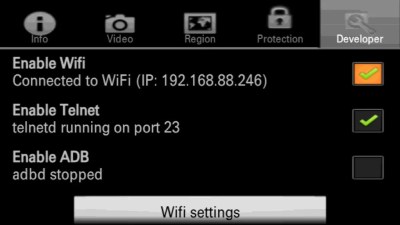 With the a5000 connected to your wireless network, you point your telnet client to its IP address and will be greeted by a BusyBox interface that should be familiar to anyone who’s played with embedded Linux gadgets. The final step is to invoke the proper command,
With the a5000 connected to your wireless network, you point your telnet client to its IP address and will be greeted by a BusyBox interface that should be familiar to anyone who’s played with embedded Linux gadgets. The final step is to invoke the proper command, bk.elf w 0x01070a47 00, which sets the specific address of the camera’s configuration file to zero. This permanently disables the HDMI overlay, though it can be reversed by running the command again and setting the byte back to 01.
As you might expect, the Sony-PMCA-RE package is capable of quite a bit more than just unlocking a telnet server. While it might not be as powerful as a firmware modification such as Magic Lantern for Canon’s hardware, those looking for a hackable camera that won’t break the bank might want to check out the project’s documentation to see what else is possible.
Continue reading “Telnet Gets Stubborn Sony Camera Under Control”
ESP8266 Controls TiVo Over The Network
Remember the TiVo? The set-top DVR that was once so popular of a hacking target that Hackaday had a dedicated subdomain for it has today largely faded into obscurity as time-shifted viewing has given way to Internet streaming services like Netflix and Hulu. But make no mistake, while the TiVo may no longer be the centerpiece of the average home entertainment center, there’s a diehard group of antennaed aficionados that are still rocking (and hacking) them.
One such TiVotee is [Thomas McQueen], who recently discovered his TiVo-powered Virgin Media V6 DVR was listening for commands on the network. After finding some official documentation for the protocol and firing off a couple of test commands from his computer’s telnet client, he realized he had an opportunity to flex his microcontroller muscle and create a library that would allow controlling the set-top box with the ESP8266 or other network-capable MCU.
[Thomas] built his project on-top of the basic Arduino WiFi library, making every effort to make it as generalized as possible so it could work on a multitude of platforms and with various targets. He even made sure to give all his functions friendly names that won’t leave users scratching their head when they read through example code down the road. We’ve seen far too many software projects that were poorly documented or obtusely programmed, so it’s always good to see somebody putting some forethought into their code.
The library makes it easy to add TiVo control to your project, but [Thomas] went one step further and came up with an example application that provides a web interface on the ESP8266 or ESP32. Any device with a web browser, such as a smartphone, can connect to the UI and fire off commands to the TiVo. His next step is to combine his library with some code to talk to Amazon’s Alexa so he’ll be able to control playback with his voice.
We’ll hand it to these TiVo users, they’re a tenacious lot. Earlier in the year, we covered how one dedicated TiVo fan managed to brute-force the child lock on his DVR using the Arduino and an IR LED.
Command Line Utilities… In The Cloud?
Although many people think of Linux-based operating systems as graphical, really that GUI is just another application running over the bare operating system. Power users, remote administrators, and people running underpowered computers like a Raspberry Pi have a tendency to do more with command line tools. [Igor] did a FOSDEM19 presentation you can see below about how he’s providing web-like services to the command line using web servers and curl as a client.
This is subtly different from just accessing an ordinary web server via curl. The output is meant for display in the terminal. Of course, you could also hit them with a web browser, if you wanted — at least, for some of them. [Igor’s] tools include a weather reporter, a QR code encoder, information and graphs for currency and cybercurrency rates, and an online help system for programmers.
Espple: A Wireless Apple 1 On An ESP8266
The Apple 1 was one of the three big hobbyist computers that burst onto the scene in 1977. Unlike the PET 2001 and the TRS-80, only a couple hundred Apple 1s were ever produced, and with only a handful in existence today, you’ll have to fork out some serious money to get a Wozniak original for yourself.
The Apple 1 experience is easily emulated, of course, but this ESP8266 emulates the Apple 1 on hard mode. Dubbed the Espple by its creator [Hrvoje Cavrak], it emulates the 6502-based original in all its 1-MHz glory, while providing 20-kB of RAM, a considerable upgrade over the 4-kB standard. The complete original character set is provided for that old-timey feel, and there’s a BASIC interpreter ready to go. The kicker here, though, is that the emulator is completely wireless. You telnet into the 8266 rather than connecting a keyboard directly, and video is transmitted over-the-air using a GPIO pin as a 60-MHz PAL transmitter. A short length of wire is all you need to transmit to an analog PAL TV on channel 4; the video below shows a little BASIC code running and a low-res version of Woz himself.
You’ll find Apple emulators aplenty around these parts, everything from an Apple ][ on an Arduino Uno to a tiny Mac on an ESP32. There hasn’t been much in the way of Apple 1 emulations, though, at least until now.
Adding Speech Control To An Old Robotic Arm
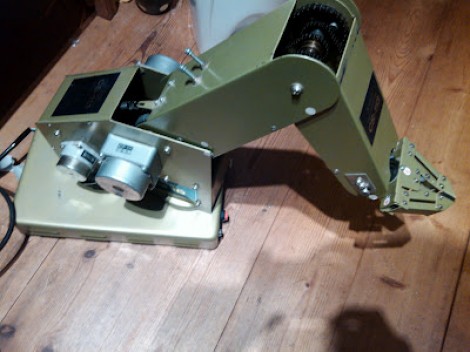
[Joris Laurenssen] has been hanging onto this robotic arm for about twenty years. His most recent project uses some familiar tools to add voice control for each of the arm’s joints.
The arm has its own controller which connects via a DB-25 port. [Joris’] first task was to figure out what type of commands are being sent through the connection. He did some testing to establish the levels of the signals, then hooked up his Arduino and had it read out the values coming through the standard parallel connection. This let him quickly establish the simple ASCII character syntax used to command movement from the device. There’s only eight command sets, and it didn’t take much work to whip up a sketch that can now drive the device.
The second portion of the project is to use voice commands to push these parallel signals to the arm. Instead of reinventing the wheel he decided to use the speech recognition feature of his Android phone. He used Scripting Layer for Android (SL4A) and a Python script to interpret commands, push them to his computer via Telnet, and finally drive the arm. We’ve embedded the video demo after the break. He gives the commands in Dutch but he overlaid comments in English so you can tell what’s going on.
Continue reading “Adding Speech Control To An Old Robotic Arm”


